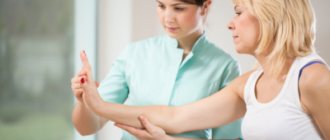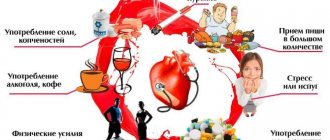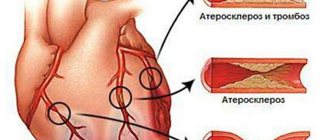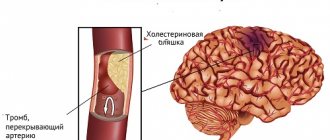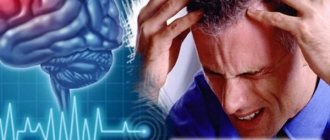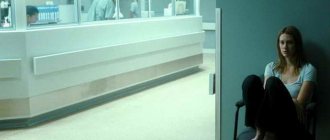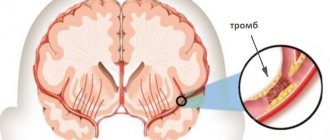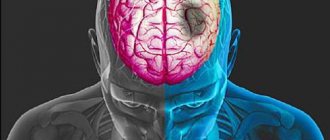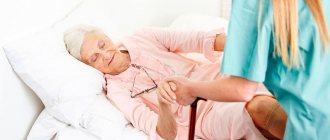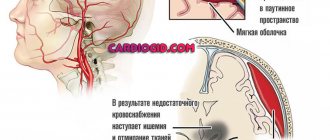Stroke is a sudden disruption of blood circulation in the brain, blockage or rupture of a cerebral vessel. When a blood vessel is blocked, an ischemic stroke occurs, and when a blood vessel ruptures, a hemorrhagic stroke occurs. It is considered to be the most common brain disease in the adult population. Moreover, with age, the risk of stroke increases significantly. According to statistics, stroke affects 0.1 - 0.4% of the population per year, depending on the country of residence. Stroke is the leading cause of human disability and ranks third among the causes of mortality.
What is the difference between a stroke and its causes in women and a stroke in men:
- Stroke affects women mainly after 60 years of age, while in men the risk appears after 40 years of age.
- Previously, it was believed that stroke was a problem for older people and women; stroke affected them less often than men, and that after 60 years of age the risk was the same for both men and women.
- However, at the age of 18 - 40 years, stroke began to occur more often in women than in men.
- Pregnant women are also more likely to have a stroke
- Young women often ignore symptoms of transient ischemia
- Women suffer strokes more severely than men
- Death rates from stroke are higher in women than in men
- A smaller percentage of women are able to return to their previous rhythm of life after a stroke; men cope better with this
- "Unconventional" early signs of stroke may be more common in women than in men
- To the well-known risk factors in women are added: taking oral contraceptives, pathological pregnancy, migraine pain; women have a higher predisposition to thrombosis and vascular complications.
- Women who have frequent mood swings, are not stress-resistant, are not balanced, and have a tendency to dwell on problems are more susceptible to cerebral stroke.
Women who smoke after age 30 and take birth control have a 22 percent increased risk of stroke. In recent decades, there have been very frequent cases of severe ischemic strokes associated with the popularity of such a method of contraception as oral contraceptives (see birth control pills are dangerous for women's health).
About microstroke
“Micro-stroke, symptoms, first signs in women” - this is the topic of our article today.
Minor stroke, transient ischemic attack (TIA) , transient cerebrovascular accident are different names for the same vascular process - microstroke.
A microstroke is a local lesion of the blood vessels of the brain , has a number of similar symptoms to a large stroke, but its manifestations are not so pronounced, and the attack is characterized by “transience”, lasting from several minutes to a day.
Men and women can be equally exposed to transient ischemic attack , but due to the natural differences between male and female bodies, the course of the process will differ in the clinic.
Precursors of stroke
As a rule, a stroke does not occur out of the blue. Before a stroke, there are always symptoms of the onset of a disruption in the blood supply to the brain. People at risk for stroke include those with hypertension, smokers, diabetes, obesity, cardiovascular disease, and high cholesterol. The first traditional signs of stroke in women:
- Dizziness
- Headache
- Noise in my head
- Speech is difficult
- Increased forgetfulness, memory impairment
- Numbness in the limbs, face
- Impaired coordination of movements
To check that these are signs of a stroke, you can perform a simple test:
- ask to smile if half of the face remains motionless - this is a stroke
- ask to keep your arms raised up; if your muscles are weak, this will not be possible
- ask to repeat a simple phrase; if you cannot repeat it after you, it means there are problems with articulation and this is an acute attack of circulatory disorders.
- ask to stick out your tongue - its tip deviates towards the lesion in the brain if there is a stroke
If such symptoms occur, this is an ischemic stroke, the symptoms of which are unambiguous and suggest a cerebral circulatory disorder. The sooner emergency medical care is provided, the more favorable the prognosis for such a serious illness will be. It is optimal if you seek help within 2-3 hours after the onset of the attack.
Female stroke, the symptoms of which are sometimes unconventional at the onset of the disease, often complicates the early diagnosis of the disease, which significantly delays the provision of adequate medical care. Doctors from the University of Michigan examined 470 patients with ischemic stroke, that is, resulting from vascular thrombosis or embolism.
Cases of cerebral hemorrhages—hemorrhagic stroke—were not considered in this study. The majority of respondents reported typical stroke symptoms combined with some atypical symptoms, but 4 percent of women and 3 percent of men experienced only “non-traditional” stroke symptoms. Taking into account other factors, the scientists concluded that women were 42 percent more likely to exhibit at least one “non-traditional” sign of stroke.
Treatment (therapy) of microstroke
When treating a microstroke, the following is prescribed:
- Thrombolytics : drugs that kill blood clots, restore blood flow, dissolve blood clots. Indicated for micro-strokes and ischemic strokes. But their use in hemorrhagic stroke leads to the death of the patient.
- Anticoagulants : reduce blood clotting and prevent blood clots.
- Disaggregants : prevent blood cells from joining into a single clot.
- Diuretics : relieve swelling in brain tissue.
- Neuroprotectors : restorative therapy drugs that support brain cells and reduce the risk of relapse.
Treatment includes physical therapy classes, water treatments, massages, breathing exercises, and diet. An important factor in eliminating relapses and maintaining vascular activity is giving up alcohol and smoking and controlling weight.
The distinctive atypical signs of stroke according to this study included:
- Mental disorders - confusion, loss of consciousness, disorientation
- Neurological symptoms – hiccups, nausea, weakness
- Dry mouth
- Sharp pain in the face or on one side of the body
- Headache
- Heartbeat
- Shortness of breath, difficulty breathing
- Chest pain
Symptoms of stroke in women and men primarily depend on the part of the brain that is affected. If the left side is affected, stroke symptoms will appear on the right side of the body. Conversely, if the right side of the brain is affected, the risk of changes will be felt in the organs that are on the left.
Stroke of the right and left side - treatment, consequences. After the first signs of a stroke, the patient’s condition begins to deteriorate noticeably. In the acute stage of the disease, according to statistics, 30-35% of patients die. More than 50% of patients die in the first year after this. 20% of people are able to return to work in the future and 10% remain disabled.
Distinctive features of female and male microstroke
Despite the similarity of symptoms and clinical picture, there are a number of specific differences between a “female” microstroke and a “male” one :
| Microstroke in women | Microstroke in men |
| The changes affect the vessels located in the occipital part of the head. This disrupts blood flow to the occipital and temporal lobes, cerebellum, and brain stem. | The vessels located in the front of the head are affected |
| Emotions are not controlled; the transition from tears to aggression can take several minutes. Mental disorders are one of the signs of a “female” microstroke | Changes in mental state occur rarely; a man is able to control his psycho-emotional state. |
| The risk of developing cerebrovascular accident is higher if a woman: · had an abortion or miscarriage; · had complications during pregnancy | The risk of developing TIA in men has nothing to do with reproductive function |
| The recovery period takes longer, there is a high risk of relapse with more severe symptoms | Recovery is faster, consequences are less obvious |
The main signs of stroke in women:
- Severe headache for no particular reason
- Numbness of the face, weakness of facial muscles
- Numbness on one side of the body, upper and lower limbs
- The appearance of inability to gesture
- Impaired speech, ability to speak, misunderstanding of speech
- Visual impairment, up to sudden loss of vision, especially in one eye, double vision
- Impaired sensitivity and coordination
- Sudden loss of balance, possible convulsions
- Nausea, vomiting, hiccups, fever, difficulty swallowing
- Falls and unexplained dizziness
- Depression, inability to manage emotions
- Short-term loss of consciousness - the face becomes red, breathing is rapid, deep, the pulse is low, tense, the pupils do not react to light.
- During eating, liquid food flows out of the mouth; when a woman, for example, eats soup, it flows from one side of the mouth.
How to treat
A person is treated for a stroke in a hospital, where constant monitoring is provided. During therapy, the following activities are carried out:
- The cause that caused the stroke is eliminated. This could be a sharp increase in blood pressure due to hypertension, vascular atherosclerosis, ischemia, or kidney problems. The patient's condition is stabilized with the help of medications.
- Blood flow is restored. For this purpose, agents are used that thin the blood and eliminate vascular spasms. But if a hemorrhagic stroke occurs, in which there is severe bleeding and the walls of the vessels rupture, then it is necessary to reduce the blood pressure on the vessels.
- Medications are prescribed to improve the tone of the vascular walls.
- Blood pressure is normalized with the help of drugs injected into the blood.
- Diuretics are taken to lower blood pressure and prevent brain swelling.
Important information: Is it possible to take a steam bath after a stroke?
For stroke in older people, medications are prescribed to maintain heart function and reduce cholesterol in the blood. The treatment also includes a diet that must be strictly followed. The person’s lifestyle is also adjusted.
Differential diagnosis with migraine
| Stroke | Migraine | |
| State of consciousness |
|
|
| Vegetative manifestations |
|
|
| Focal symptoms | Depending on which area of the brain is damaged:
|
|
Stroke Prevention
It is always easier to prevent a disease than to treat it. Here are some tips to reduce your risk of stroke:
- Limit your salt and fat intake
- If you have diabetes, control your sugar levels
- Stop smoking
- Don't abuse alcohol
- Exercise daily
- Control your blood pressure
- Get enough sleep, lack of sleep is a precursor to hypertension and metabolic disorders
- Follow a diet if you are overweight
- Eating fruits and vegetables reduces the risk of atherosclerosis, the culprit of stroke (see treatment of cerebral atherosclerosis)
Author:
Selezneva Valentina Anatolyevna physician-therapist
Providing first aid for a microstroke
If it is impossible to quickly call a doctor, follow this algorithm:
- The patient is placed in bed, providing unhindered access to fresh air.
- They give you a tablet of Aspirin, Agrenox or, if they are intolerant, Clopidogrel.
- To improve blood flow and protect brain neurons, give piracetam or Vinpocetine.
- Blood pressure is measured, and if its first number exceeds 200, it is slowly lowered. Furosemide or Captopril are used.
- In diabetes mellitus, glucose levels are reduced.
The safest statin for lowering cholesterol
For micro-strokes, do not take popular painkillers containing caffeine (Citramon), as they increase blood pressure even more.
Check out the list of the best blood pressure pills.
